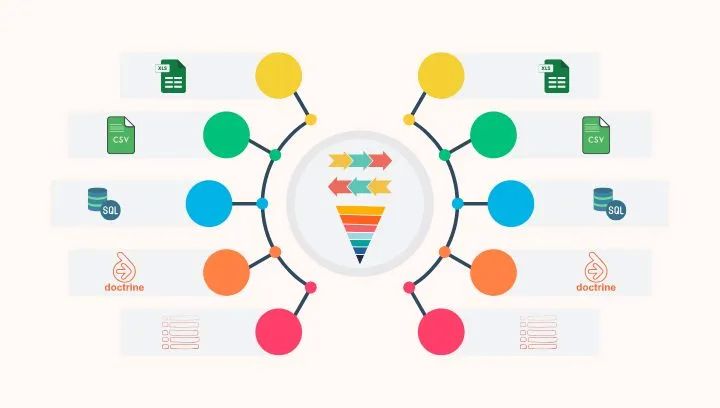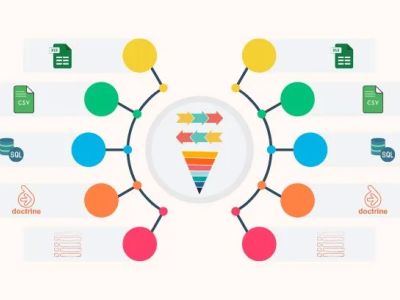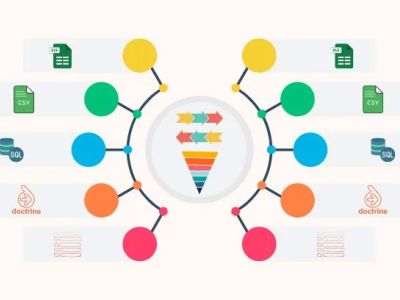Welcome back to Part 2 of our series on managing data import and export with PortPHP! In the previous article, we explored the key features and benefits of PortPHP, a versatile PHP library that simplifies data management tasks. In this continuation, we'll delve deeper into one of the essential aspects of data management - data filtering during the import process. By leveraging PortPHP's data filtering capabilities, you can ensure data accuracy, consistency, and security as you import data into your applications.
Quick Recap
PortPHP offers an array of useful features, including support for multiple data formats, seamless database interactions, data validation, and transformation. Its performance optimization allows you to efficiently handle large datasets, making it an ideal choice for data-intensive applications.
Data Filtering with PortPHP
In PortPHP, data filtering during the import process is a crucial step to ensure data accuracy, consistency, and security. Filtering allows you to validate, clean, and transform data before it is stored in the database or used in your application. PortPHP provides several filtering options that you can use to achieve these goals.
Let's explore some of the essential data filters available in PortPHP:
HeaderFilter:
The HeaderFilter is used to validate and process the header row of the data source. It ensures that the column headers match the expected format and structure before proceeding with the import. This filter is beneficial when dealing with CSV or Excel files, as it allows you to verify that the required columns are present and correctly labeled.
Example Usage:
use Port\Filter\HeaderFilter; $headerFilter = new HeaderFilter();
$workflow->addFilter($headerFilter);ValidatorFilter:
The ValidatorFilter is responsible for data validation during the import process. It allows you to define custom validation rules for each column in the dataset. Any data that does not pass the specified validation rules will be skipped or can be handled according to your requirements.
Example Usage:
use Port\Filter\ValidatorFilter; $validatorFilter = new ValidatorFilter();
// Add custom validation rules for each column
$validatorFilter->add('column_name', function ($value) { // Custom validation logic return $value !== null && $value !== '';
});
$workflow->addFilter($validatorFilter);NullFilter:
The NullFilter is used to remove any rows from the dataset that contain null values in specific columns. This is useful for cleaning up the data before storing it in the database or performing further processing.
Example Usage:
use Port\Filter\NullFilter; $nullFilter = new NullFilter(['column_name_1', 'column_name_2']);
$workflow->addFilter($nullFilter);CallbackFilter:
The CallbackFilter allows you to apply custom data transformation logic during the import process. You can modify data values or even skip certain rows based on your specific requirements.
Example Usage:
use Port\Filter\CallbackFilter; $callbackFilter = new CallbackFilter(function ($row) { // Custom data transformation logic if ($row['age'] < 18) { // Skip rows with age less than 18 return false; } // Modify a data field (e.g., converting a date format) $row['date_of_birth'] = date('Y-m-d', strtotime($row['date_of_birth'])); return $row;
});
$workflow->addFilter($callbackFilter);By combining these filters in the appropriate order within your PortPHP import workflow, you can effectively manage data filtering during the import process. This ensures that the data being imported meets your specified criteria and is ready for storage or further processing within your application.
Remember that the order in which filters are applied matters, as the output of one filter will be the input to the next one in the workflow. Always plan the filter sequence carefully based on your specific data import requirements to achieve the desired outcomes.
Conclusion
In this second part of our series, we've explored how PortPHP's data filtering capabilities can significantly enhance data integrity during the import process. By incorporating the HeaderFilter, ValidatorFilter, NullFilter, and CallbackFilter into your import workflow, you can ensure that your data is accurate, consistent, and reliable.
PortPHP continues to prove its worth as a powerful PHP library for managing data import and export operations. Its wide range of supported data formats, seamless database interactions, and performance optimization make it an indispensable tool for developers dealing with data-intensive applications.
In the next part of our series, we'll dive into the data export functionality of PortPHP and explore how you can efficiently export data from your applications to various formats and destinations. Stay tuned for more insights into unlocking the full potential of PortPHP for your data management needs!




